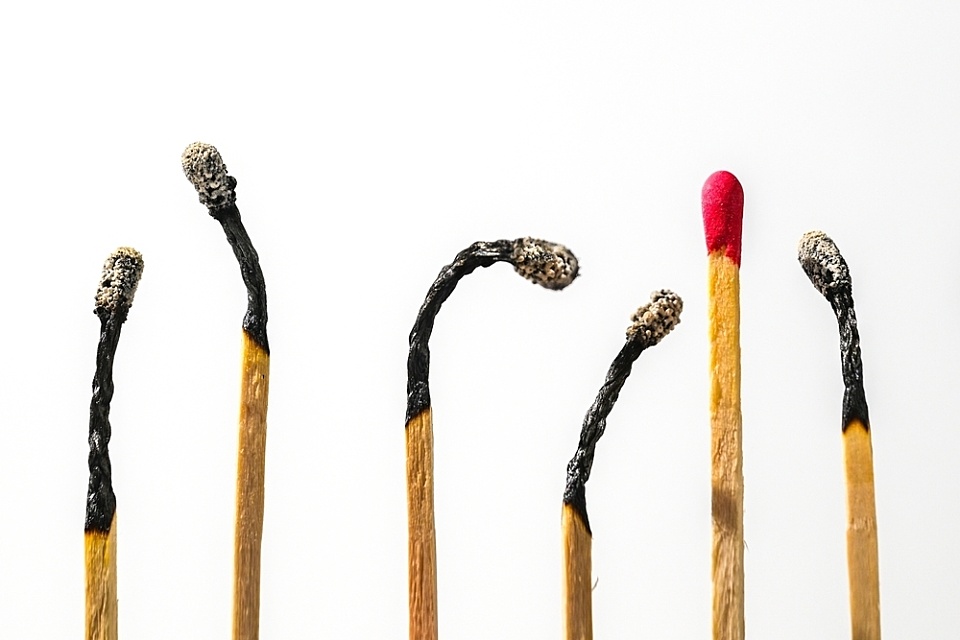
ICDA and BoardPro partnership unlocks digital governance tools for not-for-profits nationwide
Posted on 10 Dec 2025
Adele Stowe-Lindner, Executive Director, Community Directors The Institute of Community Directors…
Posted on 28 Aug 2024
By Matthew Schulz, journalist, Institute of Community Directors Australia

The Australian Taxation Office (ATO) rollout of new rules requiring 155,000 not-for-profits to lodge new returns faces new political scrutiny after concerns were raised by organisations struggling to understand the changes.
The new rules, which came into effect from July, require every NFP with an Australian Business Number (ABN) to lodge an annual “self-review” return or risk losing its income tax exemption, unless it becomes a charity.
According to ATO figures, only 4% of registered not-for-profits – or about 9,300 organisations, mainly social clubs and some professional associations – are liable for tax. Until now, organisations could simply declare themselves tax exempt.
But the move to force non-charities to lodge returns to prove their tax status or risk losing it is creating angst, with many smaller organisations finding the requirement onerous.
Many NFPs rushed to seek charity status to avoid having to lodge the new forms, sparking a three-month backlog with the Australian Charities and Not-for-profits Commission (ACNC) earlier this year.

In the wake of concerns, the shadow Charities Minister, Senator Dean Smith, used Parliament last week to demand the federal government and its agencies hand over a trove of documents about the rollout.
This includes correspondence, briefing notes, file notes, meeting notes, meeting agendas or minutes and other records “of interaction” since January this year between the ATO, Charities Minister Andrew Leigh, the ACNC, and Treasury.
Authorities have until Tuesday, September 10, to supply the documents, but Senator Smith has also flagged asking Parliament’s Economics References Committee to launch an inquiry into “the implications … for Australia’s not-for-profit community and the [ACNC]”, with that report due in October.
Senator Smith said he maintained a close watch on the reform, and he had personally phoned the ATO’s hotline to test its response, and hosted a briefing on the changes for Coalition senators, other MPs and staff.
“I’m giving the ATO and the ACNC a bit of time to realise that the public pressure is on,” he said.
Mr Smith believed more should be done to alert NFPs that the ATO had extended the time organisations had to lodge returns, from October to 31 March 2025, and to the availability of a help hotline (1300 130 248).
He supported considering whether revenue thresholds could be used to exempt smaller groups.
“Are we asking the sector too much, too quickly? Have we properly considered [whether] what we’re asking the sector to deliver [is] commensurate or proportional to the benefit that will be delivered to the taxpayer overall?”

It’s not just the Opposition keeping watch, with Charities Minister Andrew Leigh circulating a letter to parliamentarians on the matter.
The minister’s office would not give the Community Advocate a copy of the letter, but Dr Leigh said that soon after he took charge of the Morrison Government–era initiative, he realised that many affected organisations would “be small, with limited resources”.
“In the lead up to this first reporting year, my office has been engaging with the Tax Office to confirm their transition plans will assist not-for-profits to join the new registration system and comply with its requirements,” Dr Leigh said.
“We’ve also ensured the Tax Office will take a practical compliance approach to help organisations meet the new reporting requirement.
“This means that in the first reporting phase, the Tax Office will be able to focus its resources on helping organisations transition to the new system.”
As well as stressing the longer deadline, Dr Leigh said the government had provided extra resources to the ACNC to help manage the spike in not-for-profits seeking to register as charities. The ACNC has produced a help sheet to assist those groups and has taken new measures to allow for bulk applications by peak bodies, he said.
The peak body for community organisations, the Community Council for Australia (CCA), flagged with members last week that it was “looking forward to a parliamentary discussion” including considering that returns could “be the responsibility of the ACNC and be structured around risk using turnover to establish thresholds – as argued by the ATO itself in their submission to the ACNC Review back in 2018”.
The close interest in the rollout follows a “regulators day” earlier this month, hosted by the ACNC, at which public servants heard about challenges of the new regimen.
Landcare groups told regulators at the event that thousands of member organisations were “struggling to understand what has changed and why they need to do something that hasn’t been asked of them before”.
Other organisations are understood to be struggling to access the ATO forms, which require an NFP to update its Business Registration Number (BRN) and associated contacts, as well as to connect its BRN with a MyGovID, before it can access the forms. Some are frustrated that there is no paper form option.
"I am really satisfied with the way we have introduced the new reforms.”

ATO assistant commissioner Jennifer Moltisanti, speaking to the Community Advocate this week and in response to last week’s news report, defended the handling of the rollout and rejected suggestions that the charity regulator (the ACNC) should be placed in charge.
Her office was not given additional resources to promote the change and was not expected to expand or adjust its information campaign or processes, which had so far consisted of two letters to 155,000 organisations, website information, webinars, consultation with peak bodies, and repeated mentions in the ATO’s monthly not-for-profit newsletter over 18 months, she said.
Ms Moltisanti said she was aware of some of the difficulties faced by NFPs and accepted that accessing the form was “a little bit of a process”, but pointed to the ATO’s video service (https://tv.ato.gov.au), which provided a step-by-step guide. And she said a paper form would be too “voluminous” to cater for the eight exempt categories, which each required different information.
Despite the difficulties, the ATO did not expect to further simplify its processes.
“There is not much more that we could take out of the not-for-profit self-review return, because it only has three sections and takes about two to three minutes to complete,” Ms Moltisanti said.
Those forms required only organisational details, an assessment category, and a tax summary and declaration.
“The return itself is really quite simple, so there's not much more that we could take out,” she said.
She believed EOFY tax deadlines had brought the issue to the fore, and there had been a “steady increase in lodgements”.
“I think the reality of the situation is that tax time has made the return real to many not-for-profits.
“But what I would say to all not-for-profits is not to panic, look at our web guidance, look at the fact sheet that we've provided. And if you think you've made a mistake, let us know. We'll work with you to get it right.”
Ms Moltisanti stressed that under the new return “the law hasn’t changed”, it is just the process that is different.
“Not-for-profits that self-assess as income tax exempt have always had to review their entitlement to that exemption on an annual basis. The only thing that's changed is that now they need to report that to the ATO.”
She said in the light of the information provided to organisations, “I am really satisfied with the way we have introduced the new reforms.”
Ms Moltisanti said the changes were “absolutely not” designed to boost tax revenue but were instead driven by a desire to “strengthen transparency and integrity in the not-for-profit sector”.
“There is this myth in the community that not-for-profits are exempt from taxes, and I think that is a common myth.
“So, in many ways, there is a little bit of a reset of how people think about not-for-profits.”
While most of the 155,000 organisations subject to the reporting change would be materially unaffected by the change, some not-for-profits were mistakenly claiming income tax exemption status, she said.
She said that because not-for-profits were able to access significant tax concessions and employed more than 10% of the workforce, “they have really significant employer obligations”.
The ATO wanted to ensure that “only those that are entitled to the income tax exemption are accessing it”.
Asked whether the ATO would generate extra revenue from the reforms, Ms Moltisanti said more organisations may be subject to tax and so “we’re not expecting the measure to be completely revenue neutral”.
Earlier coverage: Tax changes causing confusion

Posted on 10 Dec 2025
Adele Stowe-Lindner, Executive Director, Community Directors The Institute of Community Directors…

Posted on 10 Dec 2025
The Australia Institute has called on the federal government to force Australian businesses to be…

Posted on 10 Dec 2025
Economic empowerment is essential to enabling recovery, restoring agency and preventing future…
Posted on 10 Dec 2025
A long-time advocate for rough sleepers in northern New South Wales has been named her state’s…

Posted on 10 Dec 2025
What a year 2025 has been, particularly at a national level where the Parliament and politics as we…

Posted on 10 Dec 2025
Anyone working in an organisation knows it: meetings follow one after another at a frantic pace. On…

Posted on 10 Dec 2025
As a qualified yoga instructor who learned the practice in her hometown of Mumbai, Ruhee Meghani…

Posted on 10 Dec 2025
Community Directors trainer Jon Staley knows from first-hand experience the cost of ignoring…

Posted on 10 Dec 2025
Stressed, overwhelmed, exhausted… if you’re on a not-for-profit board and these words sound…

Posted on 10 Dec 2025
The Institute of Community Directors Australia trains over 22,000 people each year, which gives us…

Posted on 09 Dec 2025
The late Sir Vincent Fairfax is remembered as a business leader, a chairman of AMP, and an active…

Posted on 08 Dec 2025
A pioneering welfare effort that helps solo mums into self-employment, a First Nations-led impact…